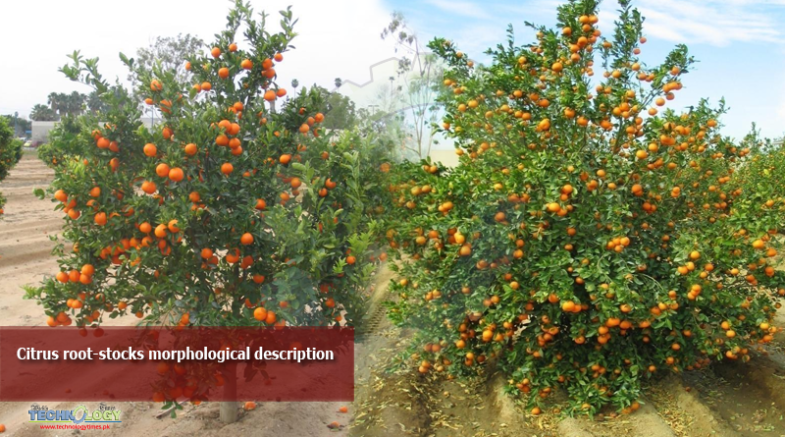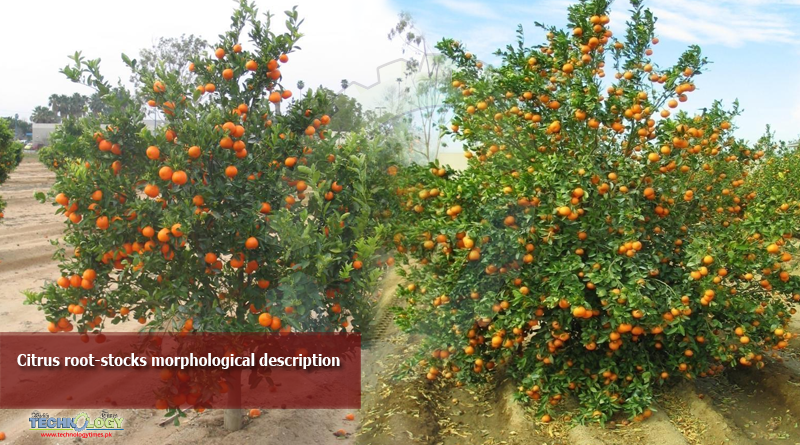Citrus is the largest genus in the family Rutaceae and is the most traded horticultural product in the world. Taxonomic identification is difficult, but citrus can be generally classified in to the rich bounty of edible fruits like mandarins, oranges, grapefruit, lemons and limes with minor categories like Tangerines, Pummellos and Tangelos.

These are known to be the natives of Southeast Asia (Indonesia and China) but they are now extensively grown almost throughout the world under tropical and sub-tropical conditions where the soil and climatic regimes are quite favorable for their growth and yield.
In Pakistan, citrus fruit has been predominantly cultivated in four provinces, namely: Punjab, Khyber Pakhtunkhwa (KPK), Sindh and Balochistan. Among all four provinces, Punjab is considered to be the hub of citrus production.
In Punjab province, three districts, Sargodha, Toba Tek Singh and Mandi Bahauddin, constitute around 55% of the total area under citrus cultivation and produce nearly 62% of citrus fruit.
Citrus (Kinows) is a prized fruit of Pakistan and occupies 1st position among all fruits both in terms of area and production. However, Pakistan is at 12th position in citrus production in the world.
It is the most extensively produced tree fruit crop in the world. There are two clearly differentiated markets: the fresh fruit and the processed juice market. Sweet orange is the predominant species for both of these markets.
Citrus fruits in all the shapes, sizes and colors are the most attractive, fragrant and appetizing with high nutritional values. These fruits contain a variety of vitamins, minerals, fiber, and phytochemicals such as carotenoids, flavonoids, and limonoids, which appear to have biological activities and health benefits. Citrus fruit has been reported to prevent liver, lungs and skin cancers; heart diseases; birth defects and contributes to a balanced and healthy life style.
The citrus industry of Pakistan is mainly confronted by many problems like lack of genetic diversity, low yield, less productive life span of orchards, alternate bearing, a number of insect pests and huge post harvest losses. Germplasm characterization, evaluation and documentation is important for its utilization in crop improvement.
A cultivated citrus tree usually consists of two joined components, the root-stock and the scion. During the planning stages of any new orchard development careful consideration must be given to the choice of root-stock. This consideration is important as the root-stock has a major bearing on tree performance and fruit characteristics.
In fact, root-stocks influence every facet of tree and fruit development and can sometimes literally mean the difference between success and failure of an orchard operation. Root-stocks have had a substantial role in the development of the citrus industry in the world.
Root-stock utilization has gain value for solving both limiting and restricting factors of citrus production (soil, climate and pests) and conditioning the market demands on productivity, short juvenility period and high-fruit quality. The root-stock may influence several aspects of citrus growth and development, including yield, fruit quality, and tolerance to stress caused by biotic and abiotic factors.
Commercial citrus varieties are propagated asexually by budding/grafting on compatible root-stocks. There is no controversy over the importance of citrus root-stock for better citrus production. Root-stocks provide growers with useful tool to manipulate the vigor and performance of orchard trees.
Effects on tree size, precocity, fruit production and maturity are achieved through complex interrelationship between the roots and canopy of the plant. Root-stocks directly affect the ability of plants to up take the water and nutrients from the soil.
They are also able to significantly alter the pattern of canopy development and functions such as photosynthesis. Besides giving anchorage to the tree, root-stock is also responsible for the absorption of water and nutrients, storage of photosynthesis and synthesis of hormones making the scion part more tolerable. More than twenty horticultural characteristics are affected by the root-stock including leaf nutrient status, vigor and size, depth of rooting, low temperature tolerance, adoption to adverse soil conditions, disease resistance and fruit quality.
Root-stocks have played a significant role in the development of the citrus industry and its effect on different physiological and biochemical parameters causing differences in plant growth, productivity and fruit quality are well documented in a number of citrus species.
